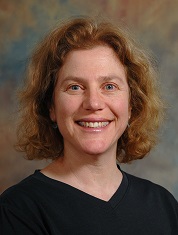|
In This Issue...
- Welcome to Budapest!
- IBNS2016 - Budapest
- Congratulations to the 2016 Travel Awardees
- Featured Speaker
- IBNS 2015 Perspectives: What do you think, Sonata?
- Trending Science
- Member News
Welcome to Budapest!
By Laszlo Lenard
Dear IBNS meeting participants, welcome to Budapest!
It is my great pleasure to introduce you to the city of Budapest - a theater of splendors – that will host and welcome you during the IBNS meeting. After your scientific duties at the meeting you will be able to enjoy the city of Budapest, which is the capital of Hungary and one of the most beautiful and touristic cities in Europe. It is also the country’s principal political, commercial and industrial center.
With its beauties, Budapest is a UNESCO World Heritage and was the European Cultural Capital in 2010. The city and the universities of Debrecen, Pécs and Szeged (where vitamin C was first discovered) will celebrate the 650th anniversary of the foundation of the oldest university of Hungary next year.
The city of Budapest includes the banks of the Danube, the Buda Castle Quarter, Andrássy Avenue, the Heroes’ Squere and the Millenneum Underground Railway, the second oldest metro line in the world. Budapest has around 80 geothermal springs, the world’s largest thermal water cave system, the second largest synagogue and the third largest Parliament building.
I wish you a very successful neuroscientific meeting and recommend you to enjoy the Hungarian atmosphere and hospitality.
I am looking forward to see you all soon!
With the warmest regards,
Laszlo Lenard
Short Historical Background
The history of Budapest dates back with Aquincum (with its amphiteatrum, open to public visit), originally a Celtic settlement that became the Roman capital of Lower Pannonia and the important fortress of the Limes, the border of the Roman Empire. Hungarians arrived in the territory in the 9th century and King Saint Stephen (István) founded the Hungarian Kingdom in 1000. In the 15th century the town became one of the centers of Renaissance humanist culture when Matthias Corvinus Hunyadi was the king of Hungary. Following the Battle of Mohács and nearly 150 years of Ottomans rule, the region entered a new age of transformations and prosperity. In the 1873, these trasformative processes, which involved significant territorial reshuffle, lead to the unification of the two rivers´ banks Buda (site of Royal Palace) and Pest. This eventually culminated in the foundation of Budapest as second capital of the Austro-Hungarian Empire.
The great power of Budapest declined in 1918 as a result of the Versailles peace treaty after the First World War. Austria and Hungary become independent republics while Hungary was divided, thus suffering the loss of two thirds of the original Hungarian Kingdom. Budapest was the focal point of the Hungarian Revolution against the Habsburgs in 1848 and against the Soviet-Communist domination in 1956. In 1990, similarly to the other East-European Countries - Hungary was liberated from the Soviet domination, the Russian troops left the country and since then Hungary became an independent republic with a democratic system. In 2005 Hungary joined the European Union.
A close look at the Kempinski Hotel and its surroundings...
The Kempinski Hotel is located in the center of downtown area. Just few steps from the hotel and you are already on the best shopping district of Budapest, the Váci Street and the Vörösmarty Square (also hub of main attractions).
The Heroes’ Square is dominated by the Millenary Monument with the Tomb of the Unknown Soldier. To the sides are the Museum of Fine Arts and the Kunsthalle Budapest and behind City Park opens out with the Vajdahunyad Castle.
At the Deák Squere, nearby the Kempinski Hotel, you will find the red line metro station giving you the opportunity for quick rides around the city through the underground network. From the Vörösmarty Square the Danube is just 3 minutes walk. The beautiful view on the Danube promenade along with the bridges, the panorama from Gellért hill, the Castle Bazar and the Buda Royal Palace are all a must-see (if you want to reach these points please check the funicular service). The Castle District (originally the old Buda City) is just on the back of the Royal Palace (which was almost destroyed during WWII). The former Royal Palace is one of the symbols of Hungary, and has been the scene of battles and wars since the 13th century. Currently it is house of two impressive museums and of the National Széchenyi Library. The nearby Sándor Palace is the official residence of the President of Hungary. The seven-hundred-year-old Matthias Church is one of the greatest beauties you find in Budapest. Next to it is the equestrian statue of the first king of Hungary, the King Saint Stephen, and behind that is the Fisherman’s Bastion from where you can have the best overview to the bridges of the Danube, the Parliament and Pest.
If you take a short walk from the Hotel Kempinski at the side of the Danube heading North you will see the beautiful building of the Hungarian Academy of Sciences and the Palace Grasham. On same direction you will find the Kossuth Lajos Square, the place of the Parliament district. The neo-gothic Parliament is the biggest building in Hungary with its 268 meters length. If you have a chance to visit inside (because of the parliament sessions it is opened temporarily) you will see there the Hungarian Crown (having a cultural value for Hungarians) and the Crown Jewels. Not so far from here you can see the Saint Stephen’s Basilica (the biggest church in Budapest), where the Holy Right Hand of the founder of Hungary, King Saint Stephen in on display. Walking back to the Kempinski at the Vörösmarty Square you should take a short rest at the Gerbeaud Café enjoying the excellent expresso coffee and sweets and the reminiscent atmosphere of the old Austro-Hungarian time. In fact, there are still several traditional Coffe Houses in Budapest (such as The New York Café and others). The city is also well known for the so-called “ruin bars”, which are very charming. Budapest has 223 museums and galleries that evoke several memories, not only of the Hungarian history, art and science, but also those memories of European and even universal culture and science (the Hungarian National Museum, the Museum of Applied Arts, Palace of Arts and the House of Terror for memory of victims of the Nazism and Communism are just a few) .
Another point of interested that must not be missed is the Széchenyi Medicinal Termal Bath, with its traditional buildings and statues built in modern Renaissance style and the open swimming pools with hot thermal water it attracts both citizens and tourists. (Other very popular geothermal springs are the Hotel Gellért Bath with its Art Nouveau interior and colourful mosaics, the Rudas and the Lukács Bath).
Participants to the IBNS Meeting will receive free maps and further information at the hotel. Further touristic information along with the Budapest Travel Card will be found at the Budapest Festival and Tourism Center. The travel card allows for free public transit and discounts for several museums, restaurants and other places. Please consult at the desk of the Kempinski Hotel.
Budapest, the city of festivals!
The Budapest Spring Festival presents on concerts and several venues across the city. The Budapest Fringe Festival brings more than 500 artists in about 50 shows to produce a wide range of interesting art works in alternative theatre, dance and music and comedy outside the mainstream. The Sziget Festival is one of the largest outdoor music festival in Europe (unfortunately it will be organized in August this year; a similar one, the Zamárdi Sound Festival at the lake Balaton will be at the end of June, so you may enjoy it if your visit is extended). There are many symphony orchestras in Budapest with the Budapest Philharmonic Orchestra being preeminent orchestras. It was founded in 1835 by Ferenc Erkel and still presents regular concerts in the Hungarian State Opera House and the National Theatre.
For those who will stay longer in Hungary, it is recommended to pay a visit of the lake Balaton (just 100 km from Budapest) and several important cities of the country.
IBNS2016 - Budapest
By Davide Amato
Dear IBNS members, we are fast approaching the IBNS's next meeting in Budapest! And while you are already thinking of enjoying the beauty of the former capital of Austro-Hungarian Empire, let’s highlight the major events of the conference.
IBNS2016 will begin with an unforgettable opening reception and student social. The meeting program will showcase 26 symposia along with two keynote lectures, one bench-to-bedside lecture and the presidential lecture. Building on the success of previous years, the IBNS will host the travel award blitz, four oral presentations, two poster sessions, the renowned career development workshop and the meet-the-professionals luncheon. We will conclude the meeting with a ceremonial banquet and dancing.
Other updates will be announced in the coming months. The scientific program is of high standards and counts the presence of scientists from all over the world to present their own work covering virtually all behavioral neuroscience fields. Joining the conference this year is highly recommended; please watch our website for updates regarding the event.
IBNS Annual Meeting, June 7-12, 2016, Kempinski Hotel, Budapest, Hungary. Hear from the best in our various fields of study, network with scientists and researchers from all over the world, present your work and enjoy the historic surroundings that Budapest, Hungary, and the Kempinski Hotel have to offer. More info at: http://www.ibnsconnect.org/meetings
| Mar 25, 2016 |
Abstract Deadline (Posters Only) |
Email the event flyer to your friends and colleagues, inviting them to attend HERE.
Congratulations to the 2016 Travel Awardees
The committee announced 18 travel award recipients, selected from 90 applications, based on independent rankings of the quality of the applications by the members of the Awards Committee. The winners include undergraduates, graduate students and postdoctoral fellows. This year was one of the stiffest travel award competitions yet. View the list of awardees here.
Featured Speaker
By Davide Amato

Featured speaker of the current newsletter is Prof. Henriette van Praag, from National Institutes on Aging, National Institutes of Health who will deliver a keynote Lecture at IBNS 2016.
Prof. Henriette van Praag will speak on the “Regulation and function of adult hippocampal neurogenesis: the role of exercise”.
Henriette van Praag is head of the Neuroplasticity and Behavioral Unit at the National Institute on Aging in Baltimore. The unit focuses on the mechanisms and neural circuitry underlying the beneficial effects of voluntary wheel running in rodents on learning and memory. Prof. van Praag has gained an international career in neuroscience being born in Amsterdam, the Netherlands, and moved to Israel after high school. After receiving her Ph.D. she gained further research experience before becoming a staff scientist at the Salk Institute (1997-2007). During spare time she enjoys hiking with her family and her beloved dog. She is deeply honored to be awarded as a keynote speaker.
IBNS2015 Perspectives: What do you think, Sonata?
In this column, we highlight a number of participants’ impressions of the last IBNS Annual Meeting in Victoria, BC, Canada.
"It was my first time attending the IBNS Annual Meeting. The meeting was the right size for meeting people. The most impressive parts were the poster presentations, scheduled at night with free food and drinks. This provided great chances for the attendees to interact and exchange ideas about their research projects. I will definitely join the IBNS meeting again!"
Trending Science
In this column, we will share the latest research, interesting scientific articles and news you can use.
Blocking inflammation prevents cell death, improves memory in Alzheimer's disease
Using a drug compound created to treat cancer, UCI neurobiologists have disarmed the brain's response to the distinctive beta-amyloid plaques that are the hallmark of Alzheimer's disease. The investigators found that... Read the full article
Member News
In this column, we share news of our members' accomplishments, career advancement, awards and honors. Submit your member news to [email protected] for our next issue.
 Jennifer Tuscher is the first author on a recently published article in the Journal of Neuroscience (2016, 36: 1483-9) showing that direct infusion of 17b-estradiol into the dorsal hippocampus not only increased spine density in CA1, but also in the medial prefrontal cortex (mPFC), suggesting that estrogenic regulation of the dorsal hippocampus influences spinogenesis in the mPFC. Tuscher and co-authors Maya Frankfurt, Vicky Luine, and Karyn Frick also found that the estradiol-mediated increases in CA1 and mPFC spine density were blocked by inhibition of ERK and mTOR cell signaling in the dorsal hippocampus. These findings fit with previous work from the Frick lab showing that activation of extracellular signal-regulated kinase (ERK) and mammalian target of rapamycin (mTOR) signaling in the dorsal hippocampus is necessary for estradiol to enhance memory consolidation. Collectively, the new findings provide the first evidence that estradiol infusion in the hippocampus can regulate spinogenesis in the mPFC and that estradiol-mediated spinogenesis in the hippocampus and mPFC depends on rapid activation of cell signaling pathways, which the investigators believe may support the memory-enhancing effects of estradiol. Jennifer Tuscher is currently a PhD student in Dr. Karyn Frick’s lab at the University of Wisconsin-Milwaukee. Jennifer Tuscher is the first author on a recently published article in the Journal of Neuroscience (2016, 36: 1483-9) showing that direct infusion of 17b-estradiol into the dorsal hippocampus not only increased spine density in CA1, but also in the medial prefrontal cortex (mPFC), suggesting that estrogenic regulation of the dorsal hippocampus influences spinogenesis in the mPFC. Tuscher and co-authors Maya Frankfurt, Vicky Luine, and Karyn Frick also found that the estradiol-mediated increases in CA1 and mPFC spine density were blocked by inhibition of ERK and mTOR cell signaling in the dorsal hippocampus. These findings fit with previous work from the Frick lab showing that activation of extracellular signal-regulated kinase (ERK) and mammalian target of rapamycin (mTOR) signaling in the dorsal hippocampus is necessary for estradiol to enhance memory consolidation. Collectively, the new findings provide the first evidence that estradiol infusion in the hippocampus can regulate spinogenesis in the mPFC and that estradiol-mediated spinogenesis in the hippocampus and mPFC depends on rapid activation of cell signaling pathways, which the investigators believe may support the memory-enhancing effects of estradiol. Jennifer Tuscher is currently a PhD student in Dr. Karyn Frick’s lab at the University of Wisconsin-Milwaukee.
 Anna Phan and colleagues have published their most recent findings on estrogen rapid effects on learning, plasticity, and hippocampal activity in the Proceedings of the National Academy of Sciences in December 2015 (112: 16018-16023). The researchers found that learning improvements...are associated with increased dendritic spines as well an unexpected reduction in AMPA receptor activity. Phan and colleagues speculate estrogens may rapidly increase the number of synapses but these remain silent unless they’re used for learning. Learning would then strengthen relevant synapses while others are pruned away. Anna Phan was a PhD student in Dr. Elena Choleris' and Neil MacLusky's labs at the University of Guelph, ON, Canada and is now a post-doc researcher at the Scripps Research Institute in Florida, USA. Anna Phan and colleagues have published their most recent findings on estrogen rapid effects on learning, plasticity, and hippocampal activity in the Proceedings of the National Academy of Sciences in December 2015 (112: 16018-16023). The researchers found that learning improvements...are associated with increased dendritic spines as well an unexpected reduction in AMPA receptor activity. Phan and colleagues speculate estrogens may rapidly increase the number of synapses but these remain silent unless they’re used for learning. Learning would then strengthen relevant synapses while others are pruned away. Anna Phan was a PhD student in Dr. Elena Choleris' and Neil MacLusky's labs at the University of Guelph, ON, Canada and is now a post-doc researcher at the Scripps Research Institute in Florida, USA.
 We congratulate Jody Pawluski, from the Brain & Behavior Foundation, on her recent NARSAD Young Investigator grant, which will allow Jody to further her work on the perinatal SSRIs effects on mice neurodevelopment. We congratulate Jody Pawluski, from the Brain & Behavior Foundation, on her recent NARSAD Young Investigator grant, which will allow Jody to further her work on the perinatal SSRIs effects on mice neurodevelopment.
Please send in your member news for our next edition!
|